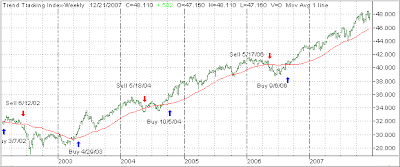 With 2007 fast coming to a close, you will find the media gearing up for a variety of market forecasts and predictions ranging from the plausible to the downright outrageous. Be prepared to be fed this information on an almost daily basis for the next few weeks. Most of this “advice” is useless as I have written about before.
With 2007 fast coming to a close, you will find the media gearing up for a variety of market forecasts and predictions ranging from the plausible to the downright outrageous. Be prepared to be fed this information on an almost daily basis for the next few weeks. Most of this “advice” is useless as I have written about before.
Nevertheless, I think it pays to look at other view points and opinions, even if you happen to disagree.
A different view about 2008 was featured in a brief interview on MarketWatch with William Knapp, chief investment strategist for MainStay Investments, who said that “investors should expect the economy to sidestep a recession in 2008 but, even if one occurs, consumers will barely know it happened.”
Wow; that’s about as optimistic of a view as I have heard. Given the variety of issues I have posted about for the past 8 months starting with the Subprime debacle, followed by the credit crises, the housing disaster and more recently the huge number of credit card defaults many banks are facing, I sure can’t agree with the above assessment. With none of these above issues even being close to being resolved, my personal view is far less optimistic.
However, whichever direction the markets will turn, there are bound to be opportunities we can take advantage of. Right now, certain sectors and countries appear to be on the upswing, and we are easing ourselves into those markets.
By only paying attention to trends, I don’t blindside myself to a certain viewpoint of what may or may not happen. If it ends up that Mr. Knapp is right, then the market trends will lead us in the direction of those areas that will move up given his outlook. If the markets adopt a more pessimistic attitude, then we will adjust accordingly and follow those trends that are supported by that scenario.






